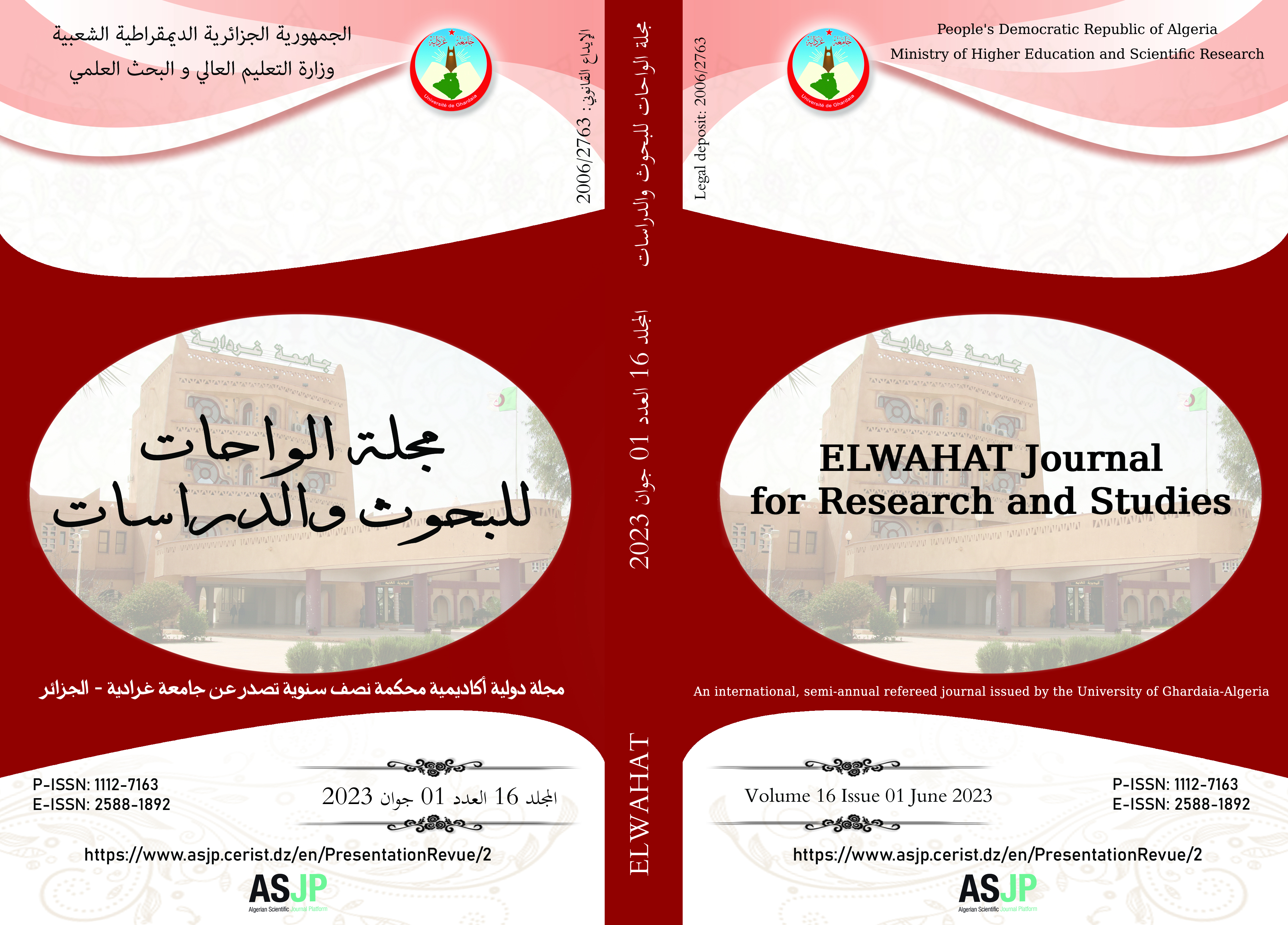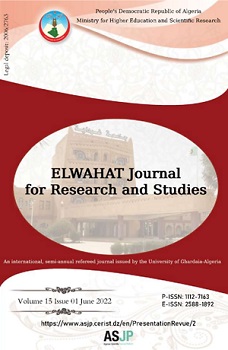Work Relations from the Perspective of Max Weber and Michel Crozier
DOI:
https://doi.org/10.54246/wenwp126Abstract
Abstract:
Studying work relations represents as a crucial cognitive subject, which is intended to decipher the relationship network between actors within organization. The purpose of this study is therefore to address work relations concepts, types and objectives relying on two opposing theories, namely Max Weber's ideal-type bureaucracy and Michel Crosier’s strategic analysis. Results showed that Max Weber strongly believes that work relations can exist only inside the formal system which is the one to control and limit them while Crozier believes that work relations are no more than a game between two sides based on strategies guaranteed by the resources the actor possesses.
Keywords: Work Relations, collective action, Ideal-Type Bureaucracy, Strategic Analysis, authority.
ملخص :
لا يزال الرهان قائما على أهمية دراسة علاقات العمل، كموضوع معرفي هام يهدف إلى فك رموز الفعل الجماعي داخل المنظمة. وبذلك فإن الغرض من هذه الدراسة، هو محاولة التطرق إلى علاقات العمل مفاهيما وأنواعا وأهدافا، وعرض وجهتي نظر مختلفة لنفس الموضوع انطلاقا من البيروقراطية المثالية لماكس فيبر والتحليل الاستراتيجي لميشال كروزيه. أين أظهرت النتائج أن ماكس فيبر يؤمن بقوة بأن علاقات العمل لا يمكن أن تخرج على النظام الرسمي وهو النظام الذي يتحكم فيها ويحد منها، بينما يعتقد كروزيه أن علاقات العمل ليست أكثر من لعبة بين أطراف فاعلة توظف استراتيجيات تضمنها لهم الموارد التي يمتلكونها.
كلمات دالة
علاقات العمل ، الفعل الجماعي ، البيروقراطية المثالية ، التحليل الاستراتيجي ، السلطة
References
1. Aïm, R. (2006). L'essentiel de la Théorie des organisations . Paris: Gualino éditeur.
2. Chester I, B. (1938). The Functions of the Excutive . Cambridge, Massachusetts: Harvard University Press.
3. Clydesdale, G. (2020). Peer Relationships in the Workplace: A Call to Arms. Kindai Management Review , 8, 48-62.
4. Crozier, M. (1964). The Bureaucratic Phenomenon. University if Chicago Press .
5. Crozier, M., & Friedberg, E. (1980). Actors and Systems. The politics of collective Action. The University of Chicago .
6. D. Heaphy, E., Byron, K., A. Balinger, G., Hoffer Gitell, J., Leana, L., & M.Sluss, D. (2018). The Changing Nature of Work Relationships. The Academy of Management , 43 (4), 1-12.
7. Donalson, L. (2010). Organizational Sociology. Historical Developments and Theoretical Approaches in Sociology , 2, 32-47.
8. Dubois, C. Half a century of French organizational sociology: methodological roots, compositionist branches.
9. E.kram, K., & A. Isabella, L. (1985). Mentoring Alternatives : The Role of Peer Relationship in Career Development. Academy of Management , 28 (1), 110-132.
10. Ehrhardt, K. (2014, May). Understanding the Role of Workplace Relationships in Employee Commitment and Engagement: A Complementary Fit Perspective.(Doctor of Philosophy). Management Science, Milwaukee: The University of Wisconsin.
11. Ezana, A. Sociology of Work, Industry and Organization. Departement of Soiology and Social Anthropolog: Addis Ababa University.
12. Gadwal, A. (2023). Industrial Sociology. Lulu Publication.
13. Harrati, T. (2020). The Role of Human Relations in Increasing Employee Performance. Budapest International Research and Critics Institute , 3 (1), 127-133.
14. Heiland, H. (2022). Black Box Power: Zones of Uncertainty in Algorithmic Management. In E. Armano, M. Briziarelli, & E. Risi, Digital Platforms and Algorithmic Subjectivities (pp. 75-86). London: University of Westminister Press.
15. Fayol,H. (1949). General and Industrial Management (Constance Storrs,. Trans.). London: Pitman and Sons, Ltd. Reviewed by Nancy M. Carter,.
16. J.Matejko, A. (1983). Actors and Systems.Compte rendu de The Politics of Collective Action, by Michel Crozier and Erhard Friedberg. Relations Industrielles/ Industrial Relations , 38 (2), 448-452.
17. Kumar, R. (2016). Bureaucratic Theory by Max Weber – A Review Study. Journal of Advances and Scholarly Researches in Allied Education , 12 (23), 212-216.
18. M.Horan, S., M.Chory, R., S.Craw, E., & Jones, H. (2021). Blended Work/Life Relationships: Organizational Communication Involving Workplace Peers, Friends, and Lovers. Communication Research Trends , 40 (2), 3-47.
19. M.Sias, P. (2008). Organizing Relationships: Traditional and Emerging Perspectives on Workplace Relationships. SAGE.
20. M.Sias, P. (2005). Workplace Relationship Quality and Employee Information Experiences. Communication Studies , 56 (4), 375-395.
21. Plan, J. M. (2008). Théorie des organisations (Vol. 3). Paris: Dunod.
22. Rouillard, C. (2005). Michel Crozier and the study of complex bureaucratic organizationss: Towars the development of Frnch strategic analysis. Canadian Public Administration , 48 (1), 124-130.
23. Scott, W., & F.Davis, G. (2016). Organizations and Organizing Rational,Natural, and Open System Perspectives. New York: Routledge.
24. Serpa, S., & Ferreira, C. M. (2019). The Concept of Bureaucracy by Max Weber. International Journal of Social Science Studies , 7 (2), 12-18.
25. Visitchaichan, S. (2004). Revisiting Weber's Theory of Bureaucracy and. Thai Journal of Public Administration its Usefulness for Analyzing Organizational Structures and Issues. , 2 (2), 127-147.
26. Weber, M. (1978). Bureaucracy. In Economy and Society: An Outline of Interpretive Sociology (Vol. 2). (G. Roth, & C. Wittich, Éds.) Berkeley: University of California Press.
27. Weber, M.(1968 trans.). Economy and Society: An Interpretive Sociology, 2 vols., ed. Guenther Roth and Claus Wittich. New York: Bedminister Press, (first published in 1924).
28. Weber, M. (1947). The theory of social and economic organization (trans. T. Parsons). New York, NY: Oxford University Press.






